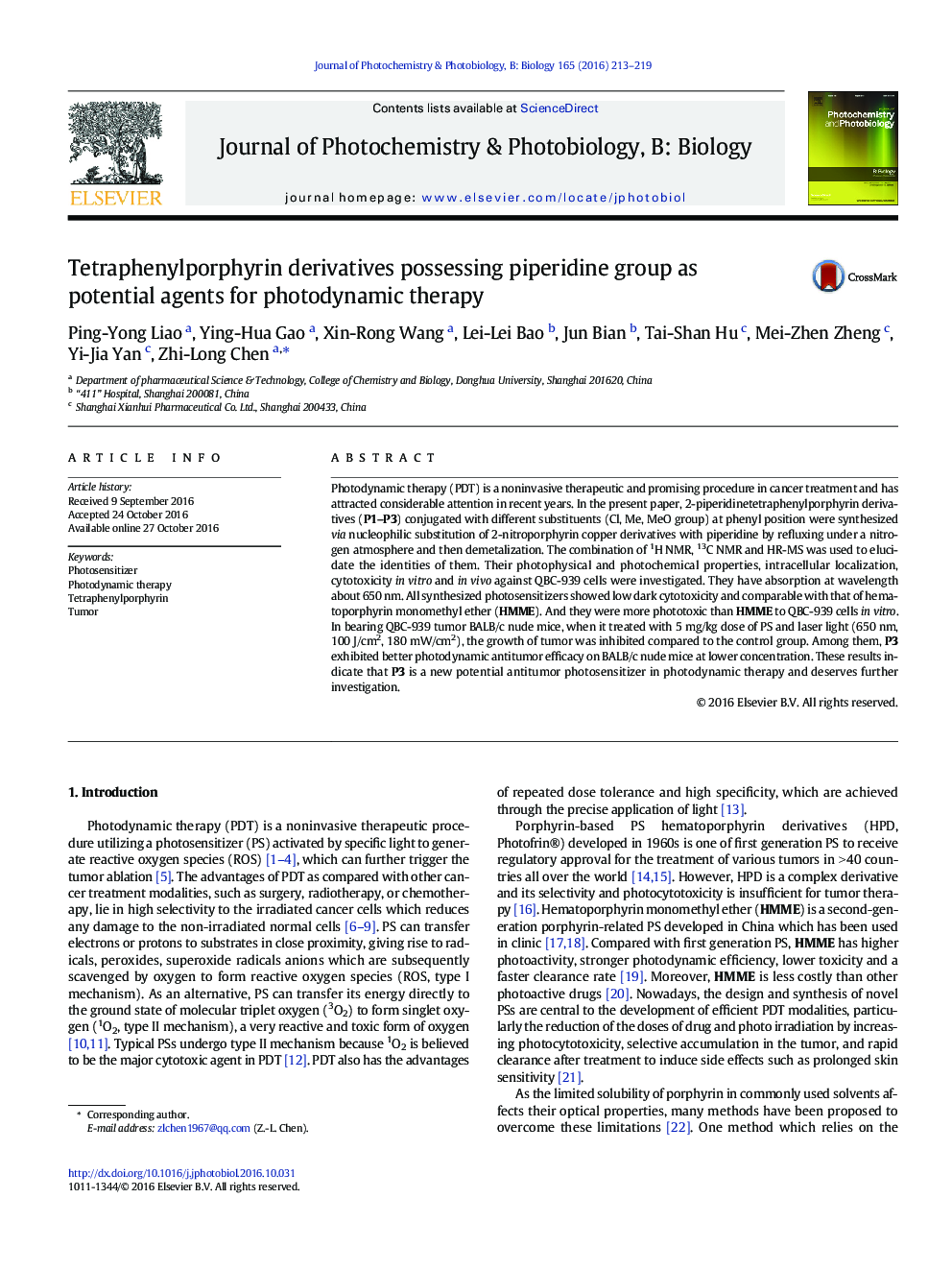| Article ID | Journal | Published Year | Pages | File Type |
|---|---|---|---|---|
| 6452594 | Journal of Photochemistry and Photobiology B: Biology | 2016 | 7 Pages |
â¢A series of 2-piperidinetetraphenylporphyrin derivatives were synthesized.â¢They exhibited low dark toxicity and excellent phototoxicity.â¢They were more phototoxic than HMME in vitro experiment.â¢P3 showed best photodynamic antitumor efficacy on BALB/c nude mice.â¢P3 is a promising antitumor photosensitizer for photodynamic therapy.
Photodynamic therapy (PDT) is a noninvasive therapeutic and promising procedure in cancer treatment and has attracted considerable attention in recent years. In the present paper, 2-piperidinetetraphenylporphyrin derivatives (P1-P3) conjugated with different substituents (Cl, Me, MeO group) at phenyl position were synthesized via nucleophilic substitution of 2-nitroporphyrin copper derivatives with piperidine by refluxing under a nitrogen atmosphere and then demetalization. The combination of 1H NMR, 13C NMR and HR-MS was used to elucidate the identities of them. Their photophysical and photochemical properties, intracellular localization, cytotoxicity in vitro and in vivo against QBC-939 cells were investigated. They have absorption at wavelength about 650Â nm. All synthesized photosensitizers showed low dark cytotoxicity and comparable with that of hematoporphyrin monomethyl ether (HMME). And they were more phototoxic than HMME to QBC-939 cells in vitro. In bearing QBC-939 tumor BALB/c nude mice, when it treated with 5Â mg/kg dose of PS and laser light (650Â nm, 100Â J/cm2, 180Â mW/cm2), the growth of tumor was inhibited compared to the control group. Among them, P3 exhibited better photodynamic antitumor efficacy on BALB/c nude mice at lower concentration. These results indicate that P3 is a new potential antitumor photosensitizer in photodynamic therapy and deserves further investigation.
Graphical AbstractDownload full-size image
